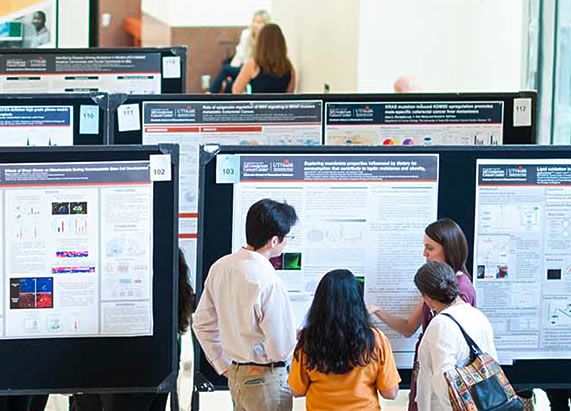MS Public Seminar: ABBIGALE PERKINS
When & Where
November 5
1:30 PM - 2:30 PM
UTHealth Houston, McGovern Medical School, MSB 1.006 (View in Google Map)
Contact
- Joy A. Lademora
- 713-500-9872
- [email protected]
Event Description
Functional Analysis of FtsA-Mediated Recruitment of FtsK in Escherichia coli
Abbigale Perkins, BS (Advisor: William Margolin, PhD)
Bacterial cytokinesis requires precise coordination between cytoplasmic and periplasmic components of the divisome to ensure that membrane constriction and chromosome segregation occur in synchrony. The actin-like protein FtsA plays a central role in this process by tethering FtsZ to the membrane and recruiting downstream division proteins. Despite its essential function, the mechanisms by which FtsA coordinates divisome activation and the recruitment of late-acting proteins remain incompletely defined. To address this, the role of FtsA in activating septal synthesis and recruiting the DNA translocase FtsK was examined using mutational analysis in Escherichia coli.
The FtsAM96E R153D variant, predicted to disrupt double-stranded (DS) filament formation, was unable to support cell division but its defect was suppressed by the superfission allele ftsL?, which constitutively activates the FtsWI complex. These results demonstrate that the DS filament form of FtsA is normally required for activating FtsWI and septal peptidoglycan synthesis but not for recruiting proteins to the divisome such as FtsK and FtsQLB, which in turn recruit and activate FtsWI. To further investigate FtsA-mediated recruitment of FtsK, mutagenesis of the FtsK N-terminal cytoplasmic domain identified two critical loop regions, Y106–D108 and E188–L190, essential for cell division. Mutations in these regions failed to fully complement an ftsKts strain, despite stable protein expression, indicating that these residues represent functional 'hotspots' required for FtsK activity.
Together, these findings establish FtsA as a central regulator that couples activation of the septal synthase FtsWI with recruitment of FtsK, thereby synchronizing septal synthesis and chromosome segregation. This work provides new mechanistic insight into how FtsA integrates key steps of bacterial cytokinesis through its dual roles in activation and recruitment.
Advisory Committee:
- William Margolin, PhD, Chair
- Peter Christie, PhD
- Heidi Kaplan, PhD
- Anna Konovalova, PhD
- Travis Moore, PhD
Functional Analysis of FtsA-Mediated Recruitment of FtsK in Escherichia coli
Abbigale Perkins, BS (Advisor: William Margolin, PhD)
Bacterial cytokinesis requires precise coordination between cytoplasmic and periplasmic components of the divisome to ensure that membrane constriction and chromosome segregation occur in synchrony. The actin-like protein FtsA plays a central role in this process by tethering FtsZ to the membrane and recruiting downstream division proteins. Despite its essential function, the mechanisms by which FtsA coordinates divisome activation and the recruitment of late-acting proteins remain incompletely defined. To address this, the role of FtsA in activating septal synthesis and recruiting the DNA translocase FtsK was examined using mutational analysis in Escherichia coli.
The FtsAM96E R153D variant, predicted to disrupt double-stranded (DS) filament formation, was unable to support cell division but its defect was suppressed by the superfission allele ftsL?, which constitutively activates the FtsWI complex. These results demonstrate that the DS filament form of FtsA is normally required for activating FtsWI and septal peptidoglycan synthesis but not for recruiting proteins to the divisome such as FtsK and FtsQLB, which in turn recruit and activate FtsWI. To further investigate FtsA-mediated recruitment of FtsK, mutagenesis of the FtsK N-terminal cytoplasmic domain identified two critical loop regions, Y106–D108 and E188–L190, essential for cell division. Mutations in these regions failed to fully complement an ftsKts strain, despite stable protein expression, indicating that these residues represent functional 'hotspots' required for FtsK activity.
Together, these findings establish FtsA as a central regulator that couples activation of the septal synthase FtsWI with recruitment of FtsK, thereby synchronizing septal synthesis and chromosome segregation. This work provides new mechanistic insight into how FtsA integrates key steps of bacterial cytokinesis through its dual roles in activation and recruitment.
Advisory Committee:
- William Margolin, PhD, Chair
- Peter Christie, PhD
- Heidi Kaplan, PhD
- Anna Konovalova, PhD
- Travis Moore, PhD







